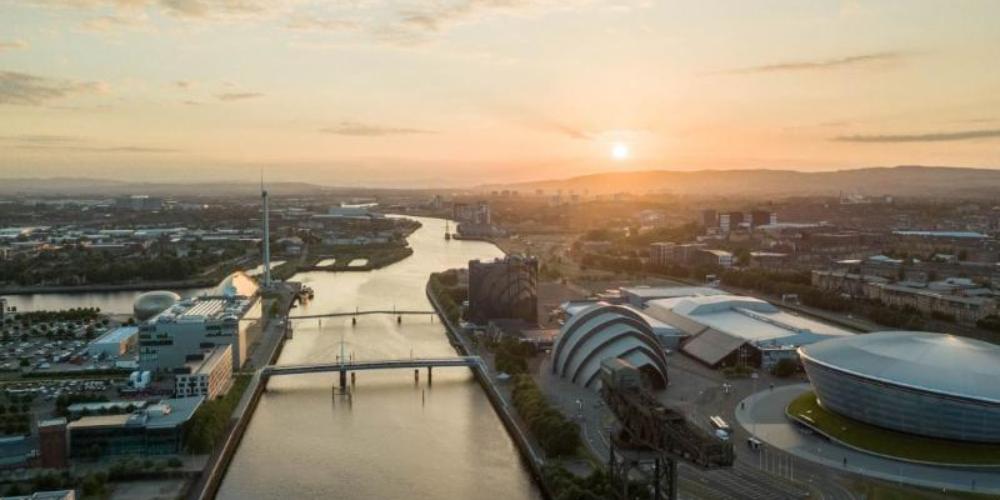Report considers tidal flooding adaptation and risk management on the Clyde

Published: 25 November 2022
Details on the model - developed by council officers in collaboration with SEPA - can be found at: https://www.glasgow.gov.uk/riverclydemodelguidance. The model is the most accurate source of flood risk information for the tidal reach of the Clyde as it includes detailed information not used in strategic level modelling undertaken by other organisations.
In terms of what the model predicts for Glasgow, within the city the Clyde will largely remain contained within its existing channel up to 2100, taking into account the SEPA-recommended climate change allowance for sea level rise. Tidal flooding will remain an incident associated with storm events, but rising sea levels mean that flooding associated with an equivalent storm event will be to a greater depth and cover a larger area of land than at present.
The creation of the model was driven by the action programme for the River Clyde Strategic Development Framework (SDF), which outlined a vision for the future development of the Clyde corridor in Glasgow. Tidal flooding was identified as a threat to the delivery of that vision.
While sea level rise is unlikely to make a significant impact on the Clyde in the short-term, in the longer-term adaptation measures will be needed, and as Glasgow is located in the Inner Estuary, an adaptation framework for the tidal river corridor will be developed in partnership with other organisations. Discussions with partners such as Clyde Mission are continuing on adaptation, including the development of an adaptation investment plan for the tidal corridor.
Informed by the new tidal flooding model and the work on adaptation, council officers have prepared guidance that defines the process that developers / designers will be expected to follow, with immediate effect, in the preparation of planning applications on and close to the banks of the river Clyde in Glasgow. The guidance (http://connect.glasgow.gov.uk/CHttpHandler.ashx?id=57881) encourages creative solutions that address flooding constraints and contribute to the council's placemaking objectives and aspirations for the delivery of the river park.
Councillor Angus Millar, Convener for Climate and the Glasgow Green Deal at Glasgow City Council, said: "The work being done by the council and our partners to model future flooding risk on the Clyde is vital for the future of the city. Understanding how this could change over time will be key to climate adaptation, responding to the future impacts of climate change on Glasgow. Additionally, as we work to support the revitalisation of the riverfront, with major development planned along the Clyde in coming years, the guidance being made to support future investment on the river will both safeguard sustainable development and create an improved environment along its banks."




